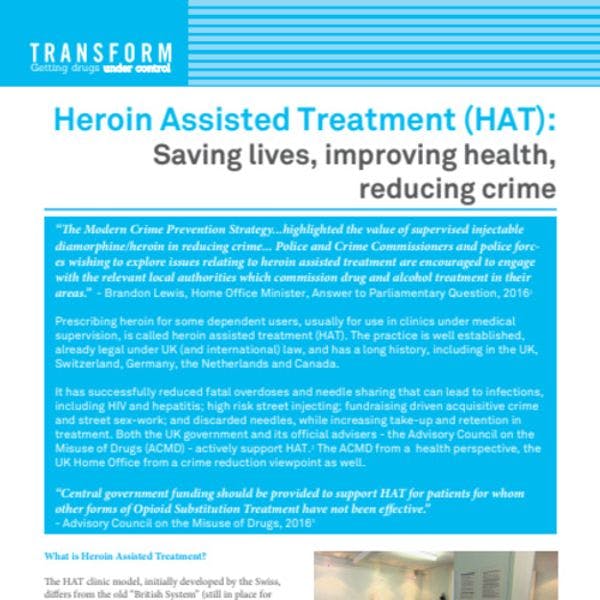Heroin Assisted Treatment (HAT): Saving lives, improving health, reducing crime
The HAT clinic model, initially developed by the Swiss, differs from the old “British System” (still in place for around 100 people in the UK) in that rather than being given ‘take home’ heroin prescriptions, patients attend a clinic once or twice a day, and use their prescriptions on site, under medical supervision.
The first Swiss pilot HAT clinics opened in 1994. In 1997, the federal government approved a large-scale expansion, aimed at 15% of the nation’s estimated 30,000 heroin users, specifically long-term users who had not succeeded with other treatments. Other countries followed suit, with the UK opening three pilot NHS supervised injecting clinics (London, Brighton and Darlington) in 2009 - the Randomised Injectable Opiate Treatment Trial (RIOTT) - extended to 2016 after proving successful.
Keep up-to-date with drug policy developments by subscribing to the IDPC Monthly Alert.
